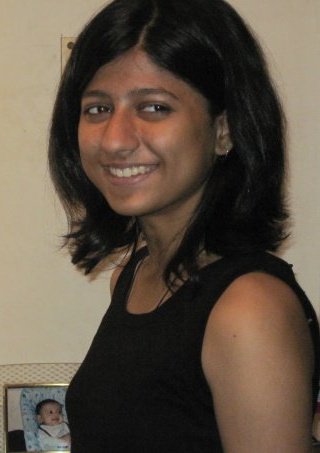Sreemoyee Roy Choudhury
Creating a microscope using an external webcam.
Aim:To locate movement in muddy/dirty water.
Requirements: 1.External Webcam 2.Laptop/Computer compatible with the webcam 3.Set of screwdrivers. 4.Quick-drying Adhesive. First connect the web cam to the computer. Then install the software and make sure that the web cam is functioning properly.Take out the web cam case using a screwdriver and invert the lens and place it on the photosensitive chip. To make sure that it is functioning properly hold the lens onto the chip, place it on the laptop screen and keep adjusting the distance and placement of the lens on the chip till RGB pixels can be seen on the laptop through the lens. Stick lens onto the photosensitive chip on the web cam. Now the web cam microscope is ready for use.
My Group consisted of Gita Upmale and myself. Unfortunately, while following the above steps, glue seeped on to our lens due to which the images we were able to capture were slightly blurred. Nonetheless we were able to look at magnified images of droplets of muddy water, a very small, thinly sliced piece of apple and a flower petal. Despite the blurred images, we were able to see the particles in the water and the translucent nature of the apple.
To make the web cam microscope work, we created a stable body for it, using a cardboard box and masking tape. We attached the glass slide onto the card board and placed the web cam over it using an adjustable clip which came with it. We fitted a torch(our source of light) on the cardboard box with masking tape so that the light fell on the slide without causing a glare.
In the second half of the class, we had a Skype chat with Sachiko Hirosue who explained to us what she has been working on and what her project is about.
DAY 2(12/01/13)
Day two started with an introduction to what we would be doing in the next four months.
We created accounts for ourselves on the Hackteria.org as well as the EPFL website.
We then discussed the uses and importance of Biotechnology along with the relationship between Science and Art, Design and Technology and then specifically spoke about the relationship between Science and Design. We tried to figure out what Science does for design. We also discussed the relationship between Religion and Science and how Science could in fact be a Religion. We also concluded that all of the above were different ways of storytelling.
We also figured out the steps to follow while conducting any experiment, namely, Aim, Materials, Construction, Hypothesis, Observations, Test and Conclusion.
Later in the day, I researched on what is: Bacteria, E coli and Yeast and got a better understanding of what we will be working on/with.
DAY 3(17/01/2013)
GANZFELD EXPERIMENT.
AIM:To test the existence of telepathy- getting information using paranormal means, by getting closest aspect of what subject A(the sender)is visualizing. MATERIALS: 1. Ping pong Ball.
2. Surgical Tape.
3. Bright Light(preferably Red.)
4. White Noise/Static.
CONSTRUCTION: 1.(For Receiver)Cut the Ping pong Ball in half and place one half on each eye and secure it with tape.
2.(For Receiver)Stare at the light source from as close as possible depending on its intensity while listening to White Noise/Static.
3.(For Sender)Concentrate on an image, thought, word or emotion and try and send it to the receiver using 'telepathy.
4.(For Both)The receiver keeps on calling out loud what he/she is seeing/feeling while the sender keeps recording them as observations.
OBSERVATION(Myself as the sender):Time: 12:09 PM - 12:31 PM.
1.Blackness- negative.
2.Dots- then one central dot.
3.'Wierd' patterns.
4.Something moving.
5.Bed.
6.Tree- a shape.
7.Rain.
8.Sound wave.
9.Room corner.
10.Feeling of difficulty.
11.Emptiness.
12.Black spots moving and dissolving.
13.Getting smaller.
14.Perspective- goes into the far.
15.Lightening.
16.Small black dot.
17.Circle divided into two.
18.Feather.
19.Hands.
20.Tree roots.
21.Narrowing in.
22.Movement.
23.Wave.
RESULTS:Success Rate was forty four percent. CONCLUSION:
